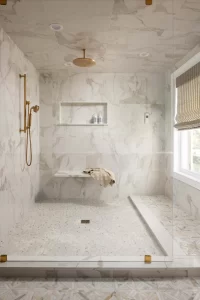Painting Techniques – Adding Texture and Depth to Your Walls

Painting techniques allow you to add depth and variety to your paintings while at the same time learning more about art through understanding how certain styles were achieved.
Fat over lean is a painting technique in which more flexible paint (the “fat”) is used on top of more rigid ones (the “lean”) to enable wet-on-wet work without lifting off layers during each stroke.
Dry Brush
Dry brushing is one of the most sought-after decorative painting techniques. This process applies a thin coat of paint over glaze for an airy effect that disperses colors, textures and patterns with subtlety.
This technique can create a worn look, perfect for farmhouse and rustic country styles, but also works to replicate the bleached effect of driftwood. Use True Value EasyCare Ultra Premium Interior Paint in pale hues like white for this painting technique for an authentic weathered finish that would fit in perfectly at a beach house!
Wet-on-Wet
A wet-on-wet painting technique creates the soft, spontaneous, and complex effects associated with watercolor painting. Simply start by dampening the paper using clean water before adding your color while it is still wet – this allows them to blend together on its surface!
Artists who work alla prima (all in one session) generally prefer keeping their paint as wet as long as possible, and adding safflower or walnut oil can help this process by drying more slowly than linseed oil.
Use this technique with textured paint as well. Simply dip a sponge in paint, squeeze off any excess, and roll it along your wall surface.
Sfumato
Sfumato is a painting technique in which subtle color-and-tone transitions merge into one another, producing a hazy atmosphere which has an immediate psychological effect, drawing viewers in and evoking their imaginations.
Leonardo da Vinci was renowned for his masterful use of sfumato in painting the Mona Lisa. This technique allowed him to soften outlines surrounding its subject’s face for a delicate and feminine appearance.
Fra Bartolommeo and Venetian painter Giorgione also used this painting technique to achieve a hazy effect and allow shadows to cast onto subjects from various angles, further adding lifelike detail.
Tenebrism
Use of stencils to paint words or phrases onto walls can add an eye-catching accent. Use bold contrasting colors for more eye-catching letters, or choose complementary hues for a subtler aesthetic. A great way to achieve this look is with the help of a patterned paint roller made of rubber with preprinted patterns.
Tenebrism is a dramatic painting technique similar to chiaroscuro but more extreme. A typical work would feature light being cast upon its subject while surrounding areas are painted dark or even black; one example of this style can be found in Gentileschi’s depiction of the Judith and Holofernes scene by Gentileschi as one example of Tenebrism painting style.
Camaieu
Camaieu painting technique utilizes various tints of one hue other than gray to produce an appealing image, often found on decorative arts such as snuff boxes, watches and medallions.
This artistic illusion, commonly known as atmospheric perspective, distorts our normal viewpoint to make subjects appear three dimensional by forcing you to see them from an unusual angle or using a curved mirror.
Physical texture in art comes from using thick paint that holds its shape and by adding various materials – such as fabric or even encaustic wax – into your painting.
Grisaille
Grisaille is a painting technique which relies solely on shades of grey or neutral colors for its composition. Popular during the Renaissance for depicting sculptures, this method can add depth and dimension to your artwork.
But unlike other oil painting techniques, grisaille allows brush strokes to show through, creating more realistic paintings with brushwork visible through its translucent qualities. Plus, it offers an excellent opportunity to practice shading techniques before moving onto color!
Chiaroscuro was a technique popular with Renaissance artists like Rembrandt and Caravaggio; it allows you to create dramatic lighting in your paintings using striking shading effects.


